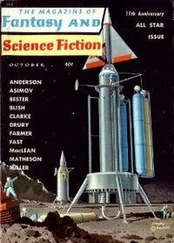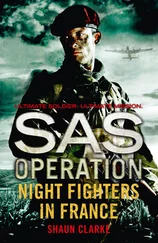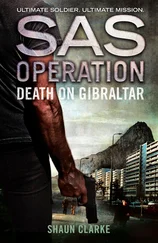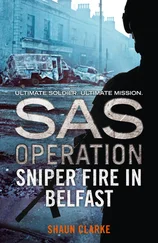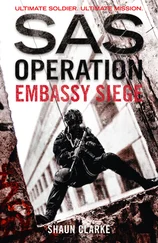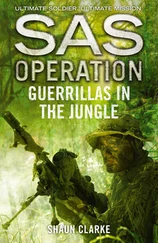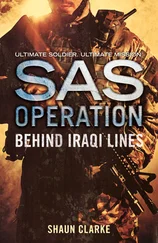SHAUN CLARKE
Published by HarperCollins Publishers Ltd
1 London Bridge Street
London SE1 9GF
www.harpercollins.co.uk
First published in Great Britain by 22 Books/Bloomsbury Publishing plc 1995
Copyright © Bloomsbury Publishing plc 1995
Cover layout design © HarperCollins Publishers 2016
Cover photographs © MILpictures/Tom Weber/Getty Images (soldier); Shutterstock.com (textures)
Shaun Clarke asserts the moral right to be identified as the author of this work.
A catalogue copy of this book is available from the British Library.
This novel is entirely a work of fiction. The names, characters and incidents portrayed in it are the work of the author’s imagination. Any resemblance to actual persons, living or dead, events or localities is entirely coincidental.
All rights reserved under International and Pan-American Copyright Conventions. By payment of the required fees, you have been granted the non-exclusive, non-transferable right to access and read the text of this e-book on screen. No part of this text may be reproduced, transmitted, down-loaded, decompiled, reverse engineered, or stored in or introduced into any information storage and retrieval system, in any form or by any means, whether electronic or mechanical, now known or hereinafter invented, without the express written permission of HarperCollins.
Source ISBN: 9780008155421
Ebook Edition © December 2015 ISBN: 9780008155438
Version: 2015-11-02
Contents
Cover
Title Page
Copyright Published by HarperCollins Publishers Ltd 1 London Bridge Street London SE1 9GF www.harpercollins.co.uk First published in Great Britain by 22 Books/Bloomsbury Publishing plc 1995 Copyright © Bloomsbury Publishing plc 1995 Cover layout design © HarperCollins Publishers 2016 Cover photographs © MILpictures/Tom Weber/Getty Images (soldier); Shutterstock.com (textures) Shaun Clarke asserts the moral right to be identified as the author of this work. A catalogue copy of this book is available from the British Library. This novel is entirely a work of fiction. The names, characters and incidents portrayed in it are the work of the author’s imagination. Any resemblance to actual persons, living or dead, events or localities is entirely coincidental. All rights reserved under International and Pan-American Copyright Conventions. By payment of the required fees, you have been granted the non-exclusive, non-transferable right to access and read the text of this e-book on screen. No part of this text may be reproduced, transmitted, down-loaded, decompiled, reverse engineered, or stored in or introduced into any information storage and retrieval system, in any form or by any means, whether electronic or mechanical, now known or hereinafter invented, without the express written permission of HarperCollins. Source ISBN: 9780008155421 Ebook Edition © December 2015 ISBN: 9780008155438 Version: 2015-11-02
Prelude
Chapter 1
Chapter 2
Chapter 3
Chapter 4
Chapter 5
Chapter 6
Chapter 7
Chapter 8
Chapter 9
Chapter 10
Chapter 11
Chapter 12
Chapter 13
Chapter 14
Chapter 15
Chapter 16
OTHER TITLES IN THE SAS OPERATION SERIES
About the Publisher
The Viet Cong guerrillas emerged from the forest at dawn, with the mist drifting eerily about their heads. There were nearly fifty men, most dressed like coolies in black, pyjama-style combat gear and black felt hats, with sandals or rubber-soled boots on their feet. Nearly all of them were small and frail from lack of nourishment and years of fighting. Their weapons were varied: Soviet-made Kalashnikov AK47 machine-fed 7.62mm assault rifles; 7.62mm RPD light machine-guns with hundred-round link-belt drum magazines; 7.62mm PPS43 sub-machine-guns with a folding metal butt stock and thirty-five-round magazine; Soviet RPG7V short-range, anti-armour, rocket-propelled grenade launchers; and, for the officers only, Soviet Tokarev T33 7.62mm pistols, recoil-operated, semi-automatic and with an eight-round magazine.
As the VC left the forest behind them and crossed the paddy-field, wading ankle deep in water, the officers quietly slid their Tokarevs from their holsters and cocked them.
The Vietnamese hamlet was spread over a broad expanse of dusty earth surrounded by trees and its edge was about fifty yards beyond the paddy-field. With thatched huts, communal latrines, some cultivated plots, a regular supply of food from the nearby paddy-field, and a total of no more than fifty souls, it was exactly what the guerrillas were looking for.
Though this was an agricultural hamlet, the VC had been informed that the peasants had been trained by the CIA’s Combined Studies Division and Australian Special Air Service (SAS) teams in hamlet defence, including weapon training, moat and palisade construction, ambushing and setting booby-traps. The peasants were being armed and trained by the Americans in the hope that they would protect themselves against guerrilla attacks. What had been happening in practice, however, is that the VC, more experienced and in much greater numbers, had been destroying such hamlets and using the captured American arms and supplies against American and South Vietnamese forces elsewhere.
This was about to happen again.
The first to spot the VC were two peasants working at the far edge of the paddy-field. One of them glanced up, saw the raiding party and hastily waded out of the paddy-field and ran back to the hamlet. The second man was just about to flee when one of the VC officers fired at the first with his Tokarev.
The sound of that single shot was shockingly loud in the morning’s silence, making birds scatter from the trees to the sky, chickens squawk in panic, and dogs bark with the false courage of fear.
The 7.62mm bullet hit the man’s lower body, just beside the spinal column, violently punching him forward. Even as the first man was splashing face down in the water, the other man was rushing past him to get to dry land and the villagers were looking up in surprise. He had just reached the dry earth at the edge of the paddy-field when several VC fired at him with their AK47s, making him shudder like a rag doll, tearing him to shreds, then hurling him to the ground as the dust billowed up all around him.
A woman in the hamlet let out a long, piercing scream as the wounded man managed to make it to his knees, coughing water and blood from his lungs. Even as he was waving his arms frantically to correct his balance, pistols and assault rifles roared together. When he plunged backwards into the paddy-field, his clothes lacerated, the bullet holes pumping blood, wails of dread and despair arose from the hamlet.
While the women gathered their children around them and ushered them into the thatched houses, the men trained by the Americans rushed to take up positions in the defensive slit trenches armed with 7.62mm M60 GPMGs – general-purpose machine-guns. Others rushed to their thatched huts and emerged carrying L1A1 SLR semi-automatic rifles of the same calibre as the machine-guns. They threw themselves on the ground overlooking the moat filled with lethal punji stakes and wooden palisades constructed by Australian SAS troops, taking aim at the attackers. The VC were now emerging from the paddy-field and marching directly towards the minefield that encircled the hamlet.
Abruptly, the VC, who knew that the village was part of the US Strategic Hamlet Program and therefore well protected, split into three groups, two of which circled around the village, weaving through the palm trees just beyond the minefield. As they were doing so, the third group were taking positions in a hollow at the far side of the moat, between the paddy-field and the hamlet, and there setting up two Chinese 60mm mortars.
Читать дальше

